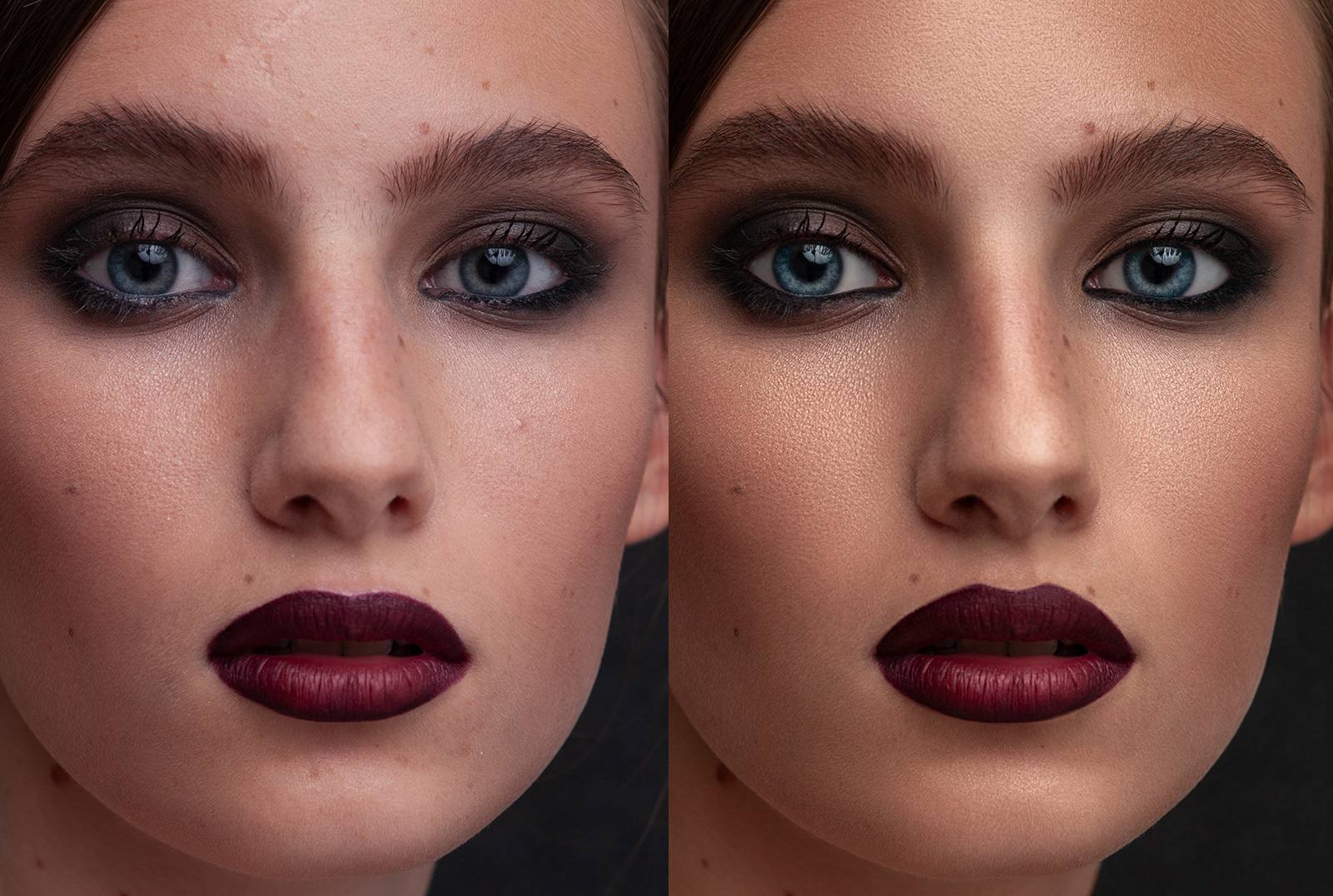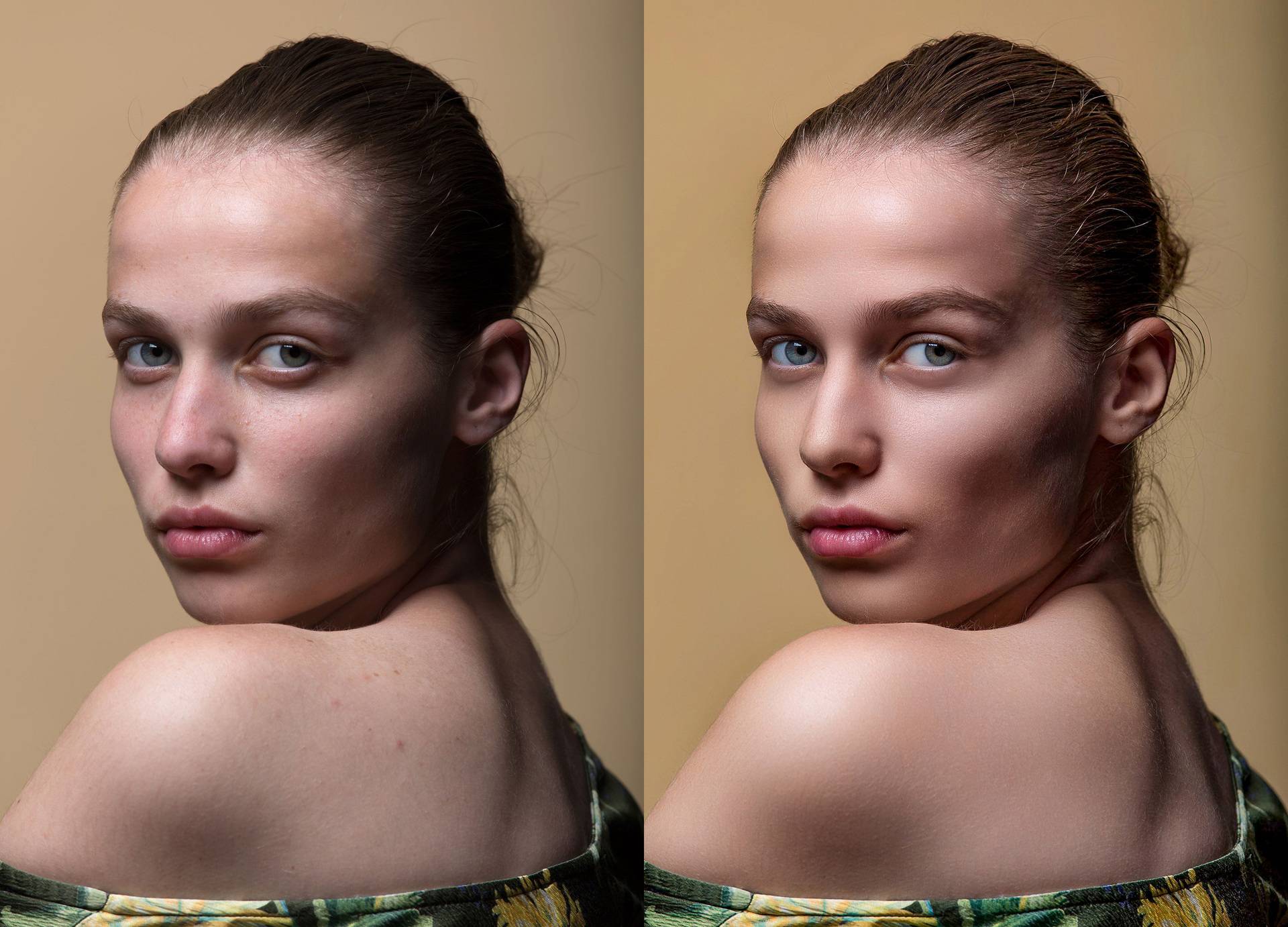
A portrait is not just an image of a person. This is a visual story about character, mood, beauty. But in order to convey it subtly and honestly, the photographer and retoucher need to be attentive to the details. It is important to maintain a living structure of the skin, emphasizing the advantages without violating individuality. This is the task with which the frequency decomposition technique perfectly copes.
On the blog Edit With Gimp We strive to show how with the help of simple and accurate tools you can work professionally and with respect to the original frame. The frequency decomposition in GIMP opens up opportunities for a delicate retouching, allowing you to adjust the tone and color of the skin, without violating its natural texture. This article will tell in detail how the method works when to use it and what nuances to take into account when processing.
Frequent decomposition is a technique based on the separation of the image into two layers:
Working with each layer separately, you can adjust color spots, irregularities and tonal differences, without affecting the skin texture. This allows you to maintain realism, while making an image aesthetic and professionally verified.
The texture is what makes the skin alive. Pores, small lines, soft irregularities - all this forms the individuality of the face. Having removed the texture, it is easy to turn the portrait into a faceless and flat image. That is why professionals use frequency decomposition not as a way to “redraw” the face, but as a method of thin correction that emphasizes naturalness.
In GIMP, you can manually implement this technique using basic instruments of blurring, overlap and masks, achieving results comparable to the most expensive photo editors.
Before starting, it is important to analyze the image:
Create a duplicate of the original layer to save the original untouched. Work on frequency decomposition requires concentration, so it is better to work in a calm environment, with a configured color screen temperature.
Create two copies of the original image. What is one layer "color", the second - "texture". The “color” layer should be under the “texture”. These two layers will become the basis for your correction.
Apply the Gaussian Blur filter to the “color” layer with such a radius that the texture of the face disappears, but the forms and volume remains recognizable. The radius is selected individually, usually in the range from 5 to 15 pixels, depending on the resolution of the photograph.
This layer will be responsible for color smoothness, elimination of spots, unevenness.
Select the texture layer. Only the details need to be removed from it, leaving the color on the lower layer. To do this, use the application function:

Result: The image should not differ from the original, but you will get the opportunity to work with color and texture separately.
Select the "Color" layer and start correction:
The effect is clean, flat skin, without interference in the relief.
Go to the texture layer. Work pointily:
Working with high detail, you will achieve visual purity, not sacrificing naturalism.
After completing the main correction, you can combine layers into a group and make final edits:
Work in layers in order to at any time be able to make adjustment without destruction of the final structure of the image.
Frequency decomposition is a tool that helps not to correct the face, but to reveal it.
Retosh is not the elimination of traces of reality, but the art of dialogue with it. The frequency decomposition technique is an ideal tool for those who strive for aesthetics without loss of personality. In GIMP you can master this technique and apply it with respect to face, light and natural texture.
Blog Edit With Gimp It exists in order to show: even the most complex methods can be available if you approach work meaningfully. Use frequency decomposition not as a means of transformation, but as a path to expressiveness. Because perfect skin is not smoothness, but a living feeling of the present.
Alexandros Johns
I thank the author for his work and useful tips, also a big plus for regular updates, there is always something new to read.
Darla Byrd
Thank you for the practical advice, I will definitely try to put them into practice.